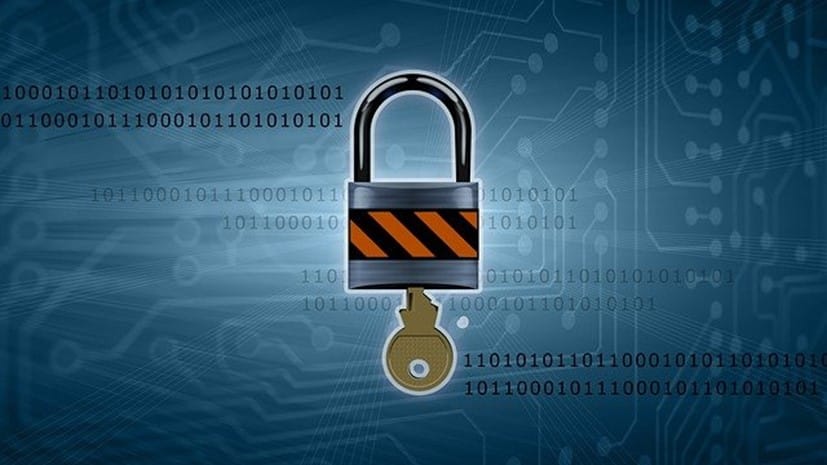Why Business Should Focus on Application Security, The Indispensable Role of Application Whitelisting for Peace of Mind
Application security is paramount for any business. Application whitelisting is the process of only allowing secure applications to run on an information system or network and rejecting the rest. Learn about the role application whitelisting plays in keeping businesses safe.
With the emergence of cloud computing and the proliferation of mobile technologies, Businesses have been increasingly exposed to data breaches and other security threats. Cyber-attacks are becoming more sophisticated and target small businesses as they are often seen as easy targets due to a lack of adequate cybersecurity safeguards. By focusing on application security, businesses can protect themselves from attacks and significantly reduce the risk of data breaches.

(Image Source: Pixabay)
Understanding Application Security
Application security mainly involves identifying, assessing, and mitigating application-level risks. By discovering and eliminating risks early in the development process (the ‘shift-left’ approach), organizations can prevent vulnerabilities from getting exploited and significantly reduce the impact of an attack.
Application security is vital for businesses because they are often some of the easy targets for malicious actors. Small businesses may not have the dedicated cybersecurity budget and resources to invest in comprehensive security solutions, making it more crucial to identify and address risks much earlier.
Key Application Security and Cybersecurity Statistics
Malicious or vulnerable applications in the information systems of small and medium-sized businesses (SMBs) can lead to various security threats, such as phishing, malware, and ransomware, to name a few. Here are some alarming app security and cybersecurity statistics:
-
In 2021, organizations’ 50% of web applications were vulnerable to attacks.
-
56% of large incidents over the last five years had their cause in web application security.
-
It can take 254 days on average to discover an exploit involving a web application.
-
According to a report from Accenture, the number of cyber-attacks per organization increased by 31% from 2020 to 2021.
-
Beta News reports that malicious actors can easily penetrate 93% of business networks.
Why Businesses Need to Focus on Application Security
SMBs need to focus on application security because they are the most likely to be targeted by cyber-attacks. This is because they have comparatively more vulnerable security infrastructure and processes than larger organizations. The following reasons clarify why businesses must have the sharpest focus on application security.
-
Application security must be integral to an organization’s security program, as any application vulnerability can compromise the entire system. Businesses need to ensure secure applications to protect their information assets.
-
If customers or clients find out that their personal information in an organization’s database has been compromised, they may be less likely to do business with that organization.
-
Data breaches can have a devastating effect on an SMB. A single data breach can cost SMBs millions of dollars in lost revenue, damage to their reputation, and regulatory fines.
-
Focusing on application security is crucial. The benefits of improved safety, customer confidence, and employee loyalty are too important to ignore.
What is Application Whitelisting?
Application whitelisting is a security practice that allows only approved or trusted applications to run on an information system or network. It helps prevent unauthorized or malicious software from running and keeps the systems safe from cyberattacks and undesirable intrusions. Its function is similar to the ‘zero trust’ security model in the sense that it only allows the applications included in the whitelist. In other words, access is denied to all until approved.
One way to implement application whitelisting is to use a dedicated software tool to create a list of thoroughly tested, approved, and trusted applications. It can also be understood from the example of the Group Policy feature on the Microsoft Windows operating system, which enables admins to let users see only specific pages and restrict others.
Is Application Whitelisting a Replacement for Antivirus?
Application whitelisting is not a direct replacement for antivirus, although, with advancements, it could become so. At the current level of development, application whitelisting runs in parallel to antivirus and similar security installations. However, application whitelisting is a proactive approach to security, whereas installing antivirus or antimalware is reactive. Besides helping prevent unauthorized applications from running, application whitelisting also improves employee productivity by reducing the need to monitor devices for security threats constantly.
At Run Networks, we scrutinize all applications for two to three weeks to catalog them to before integrating with other applications, microservices, APIs in the enterprise environment. Therefore, all new applications will need to be approved to gain access privilege. Each application is evaluated against various certificates, hashes, paths, and processes for a combined effect of such parameters in the approval process and deciding which application must be allowed. Common applications that pass the evaluation based on a combination of such criteria can be approved automatically in further instances rather than acknowledging each hash every time.
Key Benefits of Application Whitelisting
There are many benefits of using application whitelisting, but here are some of the prominent ones:
-
Increased security: Application whitelisting can significantly increase the overall safety of your systems and data by only allowing known and trusted applications to run. It can help prevent malicious software from running and causing damage.
-
Improved performance: By only allowing trusted applications to run, you can improve the performance of your systems and employees as there will be fewer resource-intensive processes running in the background.
-
Reduced support costs: Application whitelisting can reduce the need for technical support as it can help prevent software issues from occurring in the first place.
-
Enhanced Productivity:
By preventing unauthorized or malicious applications from running, organizations can minimize disruptions and ensure that employees work uninterrupted.
-
Prevents Malware and Ransomware: Application Whitelisting is a technology that can significantly prevent malware and ransomware from infecting your information systems. By only allowing trusted applications to run, you can reduce the chances of your system and database getting compromised by a malicious program.
How to Perform Application Whitelisting
Application whitelisting is an important security measure that can help protect your systems from malicious software and other threats by only allowing trusted applications to run. Implementing application whitelisting can seem daunting, but it doesn’t have to be. With a little planning and some help from experts, you can easily get started.
The initial step is to identify which applications you need to allow. It will vary depending on what you use your system for, but a good starting point is to allow common applications like your web browser and word processor. Once you have a list of trusted applications, you can add them to your whitelist.
Our Security 2.0 Initiative and How It Helps Business
At Run Networks, we have adopted a Security 2.0 initiative. Application whitelisting is our Phase 1 implementation of this initiative. This security implementation has helped our teams proactively support and secure networks, applications, and other information systems.
Security 2.0 is an approach that seriously considers the changing cybersecurity landscape across the digital world. It encompasses organizations’ technologies and processes to protect themselves from various online threats. The initiative includes leveraging web application firewalls (WAF), intrusion detection systems (IDS), intrusion prevention systems (IPS), and end-to-end encryption to safeguard sensitive and confidential data.
It also includes the development of policies and procedures to ensure elevated information security posture for organizations. The internet has changed how people live and work. However, it has also changed how malicious actors operate on an equal footing. They are now able to target organizations of all sizes with sophisticated attacks. This reason has made traditional security measures, such as perimeter security, no longer effective, and solutions like application whitelisting have become pertinent.
One of the biggest benefits of Security 2.0 is that it is much more proactive and takes the modern emerging threats into account than traditional cybersecurity approaches and strategies. With the conventional approach, businesses would wait for an attack and then try to mitigate the damage. Security 2.0, on the other hand, uses predictive analytics to anticipate attacks and take steps to prevent them before they pop up. Prevention is the first and most important step in Security 2.0 and includes detection, response, and recovery besides traditional security measures. This next-generation approach to cybersecurity can save businesses a lot of money and their reputation in the long run.
Business Implications of Application Whitelisting
Application whitelisting is a critical security strategy that allows organizations to specify which applications can run on their systems. By only allowing known and trusted applications to run, businesses can reduce the risk of malware and other threats and infections. While application whitelisting can effectively improve security, it can also be complex and time-consuming to manage.
The costs and resources required to implement and maintain an application whitelisting solution may be prohibitive for some small and medium-sized businesses (SMBs). In addition, application whitelisting can impact system performance and disrupt business operations if not properly configured.
These reasons make it important to choose an expert in the solution like Run Networks
with decades of experience in implementing security solutions, including application whitelisting, for various organizations and SMBs across the globe.
Final Words
The importance of application security for Businesses cannot be overstated. The risks of data breaches and cyber-attacks are growing, and the costs of recovering from them can be devastating. Run Networks
is among the best choices for Businesses because it offers comprehensive and affordable security solutions. The solutions are constantly updated to stay abreast with the latest threats, making them the most reliable choice for all businesses.
References
-
Sedgewick, A., Souppaya, M., & Scarfone, K. (2015, October). Guide to Application Whitelisting. National Institute of Standards and Technology. https://nvlpubs.nist.gov/nistpubs/specialpublications/nist.sp.800-167.pdf
-
Knowledgenile. (2019, July 17). 7 best application whitelisting tools. https://www.knowledgenile.com/blogs/application-whitelisting-tools/
-
Andrioaie, A. (2021, November 23). Application whitelisting concepts: Definition, types, implementation and best practices. Heimdal Security. https://heimdalsecurity.com/blog/application-whitelisting/
-
Posey, B., & Loshin, P. (2019, November). What is application whitelisting? SearchSecurity; TechTarget.
https://www.techtarget.com/searchsecurity/definition/application-whitelisting
-
Yadav, A. (2021, December 21). Application whitelisting. Colortokens.Com. https://colortokens.com/blog/application-whitelisting/



